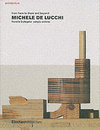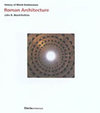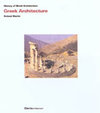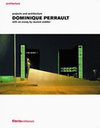
Indian architectural history
Source: Wikipedia. Pages: 50. Chapters: Hoysala architecture, Western Chalukya architecture, Dravidian architecture, Indian rock-cut architecture, Ellora Caves, Vijayanagara architecture, Mughal architecture, Aurangabad Naher water system, Kanheri Caves,... Viac o knihe
Produkt je dočasne nedostupný
15.84 €
bežná cena: 18.00 €
O knihe
Source: Wikipedia. Pages: 50. Chapters: Hoysala architecture, Western Chalukya architecture, Dravidian architecture, Indian rock-cut architecture, Ellora Caves, Vijayanagara architecture, Mughal architecture, Aurangabad Naher water system, Kanheri Caves, Badami Chalukya architecture, Anagpur Dam, Pandavleni Caves, Panchakki, Aintiram, Harappan architecture, Salabhanjika, Temple tank, Bibi Ka Maqbara, Akbari Architecture, Samarangana Sutradhara, Sikh architecture, Nanak Shahi bricks, Gaidher, Kirtimukha, Shilpa Shastras, Varaha Cave Temple, Bhonyra, Ram Raz, Talamana, Hemadpanthi, Jagati. Excerpt: Western Chalukya architecture (Kannada: ), also known as Kalyani Chalukya or Later Chalukya architecture, is the distinctive style of ornamented architecture that evolved during the rule of the Western Chalukya Empire in the Tungabhadra region of central Karnataka, India, during the 11th and 12th centuries. Western Chalukyan political influence was at its peak in the Deccan Plateau during this period. The centre of cultural and temple-building activity lay in the Tungabhadra region, where large medieval workshops built numerous monuments. These monuments, regional variants of pre-existing dravida (South Indian) temples, defined the Karnata dravida tradition. Temples of all sizes built by the Chalukyan architects during this era remain today as examples of the architectural style. Most notable of the many buildings dating from this period are the Mahadeva Temple at Itagi in the Koppal district, the Kasivisvesvara Temple at Lakkundi in the Gadag district, and the Mallikarjuna Temple at Kuruvatti and the Kallesvara Temple at Bagali, both in the Davangere district. Other monuments notable for their craftsmanship include the Siddhesvara Temple at Haveri in the Haveri district, the Amrtesvara Temple at Annigeri in the Dharwad district, the Sarasvati Temple in Gadag, and the Dodda Basappa Temple at Dambal, both in the Gadag district. The surviving Western Chalukya monuments are temples built in the Shaiva, Vaishnava, and Jain religious traditions. None of the military, civil, or courtly architecture has survived; being built of mud, brick and wood, such structures may not have withstood repeated invasions. The centre of these architectural developments was the region encompassing the present-day Dharwad district; it included areas of present-day Haveri and Gadag districts. In these districts, about fifty monuments have survived as evidence of the widespread temple building of the Western Chalukyan workshops. The influence of this style extended beyond the Kalyani region in
- Vydavateľstvo: Books LLC, Reference Series
- Formát: Paperback
- Jazyk:
- ISBN: 9781157036265


 Anglický jazyk
Anglický jazyk 









